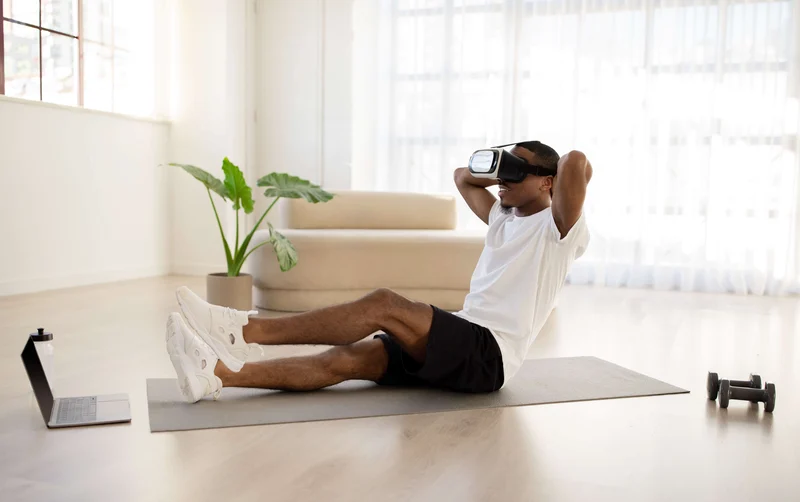Virtual Reality (VR) technology has revolutionized how we approach fitness, combining immersive experiences with effective workouts. However, setting up a VR fitness hub at home can seem expensive or complicated. The good news? You can create a budget-friendly home VR fitness hub that delivers high-quality workouts without breaking the bank. Here’s a practical guide to help you build your personal VR fitness space affordably.
1. Choose the Right VR Headset for Fitness
The cornerstone of any VR fitness hub is the headset. While premium models like the Oculus Quest Pro or Valve Index offer top-tier graphics and features, there are budget-friendly options that work great for fitness:
- Meta Quest 2 (formerly Oculus Quest 2): Often regarded as the best budget VR headset, it’s wireless, easy to set up, and has a wide range of fitness apps.
- Pico Neo 3 Link: Another affordable standalone headset with solid specs.
- Used or Refurbished Headsets: Consider buying secondhand or refurbished VR headsets from trusted sellers to save money.
Look for a headset that supports a variety of fitness apps, offers reliable tracking, and is comfortable for long workout sessions.
2. Utilize Free and Low-Cost VR Fitness Apps
Many VR fitness apps come with free trials or affordable subscriptions. Here are some popular budget-friendly fitness apps:
- Beat Saber: Combines rhythm and movement, great for cardio.
- Supernatural: Offers guided workouts in beautiful virtual environments.
- FitXR: Includes boxing, dance, and high-intensity interval training (HIIT).
- Thrill of the Fight: Focuses on boxing for a real workout feel.
Check out YouTube and app stores regularly for free demos, seasonal discounts, or community-shared workout routines.
3. Optimize Your Space for Safety and Comfort
A dedicated workout space helps you stay focused and avoids accidents during intense movement. You don’t need a large room; just a safe area roughly 6 feet by 6 feet is enough.
- Clear the Area: Remove furniture and objects you might bump into.
- Use Soft Flooring: A yoga mat or foam tiles protect your joints and reduce noise.
- Good Ventilation: VR workouts can be sweaty and intense, so keep the room airy.
Repurpose an existing corner or room rather than renting new space to keep costs low.
4. Invest in Essential Accessories, But Keep it Minimal
While accessories can enhance your VR fitness experience, many are optional. Start simple:
- Comfortable Headphones: Wireless earbuds or over-ear headphones can improve immersion.
- Sweat-resistant Covers: Protect your headset with washable face covers.
- External Chargers or Power Banks: Ensure longer playtime without interruptions.
You can add more accessories as your budget allows, but many fitness enthusiasts get started with just the headset and controllers.
5. Use Household Items for Additional Support
To avoid spending on specialized equipment, use what you already have at home:
- Resistance Bands: Affordable and great for strength training alongside VR workouts.
- Light Dumbbells or Water Bottles: For added weight training.
- Mirror: Helps you monitor your form during VR workouts.
Combining VR fitness with traditional exercise gear can create a versatile workout environment.
6. Plan Your VR Fitness Routine for Consistency
A home VR fitness hub isn’t just about equipment—it’s about making a habit. Use calendar apps or fitness trackers to schedule regular workouts. Many VR fitness apps have built-in progress tracking, helping you stay motivated.
Consider mixing different types of workouts, like cardio, strength, and flexibility sessions, to keep things interesting and balanced.
7. Maximize Your VR Hub’s Potential Over Time
Your budget-friendly VR fitness hub can evolve:
- Upgrade Gradually: As funds allow, add more accessories or upgrade your headset.
- Join Online VR Fitness Communities: Exchange tips, get motivation, and discover new apps.
- DIY Customizations: Build your own VR headset stand, or decorate your space with inspiring visuals.
Final Thoughts
Building a VR fitness hub at home doesn’t have to be expensive or complicated. By choosing an affordable headset, using free or low-cost apps, optimizing your workout space, and creatively using household items, you can enjoy immersive fitness experiences that keep you active and engaged. Consistency is key—once your budget-friendly VR fitness hub is set up, it can become your go-to solution for fun and effective home workouts.
Refer to these sources for related topics:
https://fat-aus.com/
https://neuroinfancia.org/
https://reworkinglunch.org/
https://samplesalesites.com/
https://bionatrolcbdoil.net/
https://nagercoilhomechurch.com/
https://homesture.com/
https://mehryanatravel.net/
https://nacfnews.com/
https://malnadnews.com/
https://mexicobreakingnews.com/
https://fivestarhomeventures.com/
https://thetellynews.com/
https://northeasthome.info/
https://homeguidehq.com/
https://sekilaspoker.net/
https://thesafepad.co.uk/
https://mapsmentoring.co.uk/
https://hydroponichomemade.com/
https://famagusta-news.com/
https://mattramsey.org/
https://thcmarketingsettlementclaim.com/
https://cbdnaturallifestyles.com/
https://benedictquinn.co.uk/
https://veriqual.co.uk/
https://kelapasawitnews.com/
https://futurefringe.co.uk/
https://successlookslikeyou.co.uk/
https://swisshospitalityeducation.com/
https://csfcycleforlife.org/
